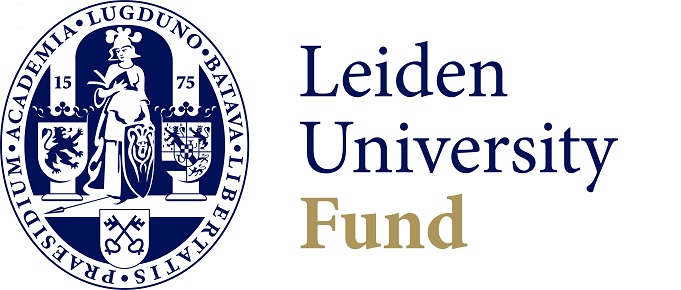
The positive effects of exercise in a pill? Research shows this is plausible
Exercising is generally good for your health. In addition, it proves a cheap and effective treatment of common cardiometabolic diseases like obesity, type 2 diabetes and heart disease. Not only because it increases energy levels, it’s anti-inflammatory, too. But what if you can’t do sports or exercise because of a serious illness, like cancer?
With funding from the Mulder-Hamelers Fund (at the Leiden University Fund) for research within the department of Endocrinology, Dr Milena Schönke leads a research project planning to mimic the positive effects of exercise. We spoke to her about her process.
You’re testing a specific molecule (designer cytokine IC7Fc) that mimics an anti-inflammatory effect released by exercise, is that correct?
‘Yes, you could call it ‘exercise in a pill’. We’re trying to make a treatment that has all the health benefits of exercise without having to exercise. Now, that doesn’t mean healthy people never have to do sports again. We’re specifically focussing on people who have a severe illness, or those who are paralysed, as their bodies would also greatly benefit from exercise but can’t.

When you exercise, your body does many things. Your muscle secretes protein pieces into the blood. These are signal molecules that transfer to the other organs, which trigger certain effects in the cell, both positive and negative. Positive effects like the improvement of your metabolism and certain processes, and negative effects like the stimulation of other inflammatory processes. This happens because your body tries to balance the effects on your different cells or tissues. We’re after IL-6, the molecule responsible for these balancing effects in inflammation and anti-inflammation. It travels throughout the body, the blood and the heart. What we’ve done is modify a part of this IL-6 to create a new molecule that prevents negative effects. What’s left is a modified molecule that reduces inflammation in the blood vessels and the aorta. So: positive effects only!’
That is incredible. How is the process going so far?
‘The results of our research are surprisingly encouraging, we’re already seeing positive changes. Until this point within the process, our research shows the effect of the exercise-mimicking molecule is a reduction of fat AND a build-up of lean muscle. This never happens in reality. Normally, when you lose weight without exercise, you lose muscle tissue, too.
Secondly, the treatment doesn’t only target inflammation but it also reduces plasma cholesterol. Very surprising, we’re still looking at what’s happening there. Usually, having high cholesterol induces clogging (and forming plaques) in all blood vessels throughout the body, but we looked around the aortic root in the heart. We know this spot is prone to developing these plaques. This can cause heart disease and strokes. But our research shows the treatment reduces the clogging of cholesterol around the heart by a huge 63%. So that’s super positive.’
Why does the field of endocrinology interest you so much?
‘I started on metabolic diseases during my Bachelors in Germany, did my Masters project at Harvard Medical School and then moved to Stockholm for my PhD. Now I’m here in Leiden in the division of Endocrinology! All that time I worked on metabolic diseases. Up until now my research has revolved around diabetes and the role of muscle, mostly. How can exercise improve metabolic regulation in the body? In 2018 I started in Leiden as a postdoc and turned my attention towards the interaction of the bacteria in the gut, the metabolism and the rest of the body. What interests me is the connection of all the organs; the interplay between the cells and the body. Endocrinology focuses on how everything works together in the body. I also did research on the brain. I think this interconnection between all the organs is so interesting, and that we still understand so little! There’s still a lot to explore.’
What does this grant mean for you?
‘I’m very grateful for the support of the donors to the LUF. We used the money for the molecular analysis, and the investigation of plaques in the heart. That kind of research and development is quite expensive. Professor Mark Febbraio at Monash University in Melbourne developed the drug and sent it to me to do further research. PhD student Wietse in het Panhuis (LUMC) is helping me. Now I’m applying for other grants and options to go to the next phase.’

What is that next phase?
‘So far we haven’t found any problems, which is odd. Normally there are side effects. We are taking a very thorough look at the all-over effects in the body. Blood, urine, a molecular level. To understand what’s going on and to not miss any negative effects we haven’t noticed yet. How is the effect on the heart mediated by the drug? Does this treatment do anything to the absorption of the cholesterol in other organs? Is it already preventing that? Does it help with fatty liver disease too?
Our Australian colleagues will take the research to the next level. Right now, the treatment’s in the form of an injection that someone would have to take twice a week. We’d like to change that into an exercise-mimicking pill you’d take once a week or once over a period of time. Drug development takes a very long time, it’s a long process. We’re doing the investigation, but we need to then go through four stages of drug development. Prove that this is better than a drug that is already on the market. That means: lots of steps ahead. But so far, the results are greatly promising.’
Dr. Schönke's research is made possible by donors from the Leiden University Fund. Do you also want to contribute to important scientific research? You can do so by setting up a named fund or making a contribution to an existing fund. For more information, please contact Heiltje Boumeester at h.boumeester@LUF.leidenuniv.nl or via 071 527 5539.
